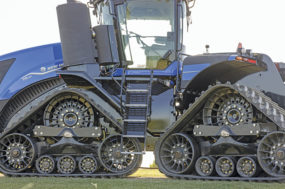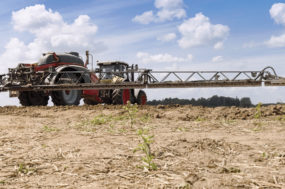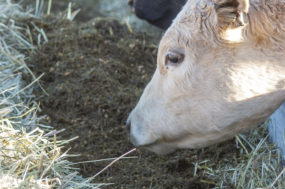Of the 1,338 reports (by my count, not including the periodic comparison reports) issued in 2012, only seven reports relate to hay: alfalfa – supreme, fair, good and utility; and grass hay – premium, good and fair.
In the same year, the ag census reported forage acres (not including sorghum or corn for silage or greenchop) at 55,775,162 acres – outdistanced only by soybeans and wheat acres. Granted, it was a poor grain-corn year due to the drought.
Yet of the 1,338 reports, only seven were dedicated to hay. But by darn we tracked cattle hides, watercress, rhubarb, jujube, delphiniums, bison, bok choy, bouvardia, genista, hoja santa, lilacs, kiwano and – lest we forget – olallie berries.
In August 2013, in the wake of tightening budgets and increased calls for accountability, the USDA released a project report designed to determine the value of these reports and establish a framework for prioritizing them.
They polled extension agents and gleaned Google search statistics to see which reports were utilized most often. They found interesting results.
Google statistics indicated most data searches were for World Agricultural Supply and Demand Estimates (WASDE) reports for the outlook on U.S. and world ag commodities.
Enter Mary Bohman, administrator of the USDA’s Economic Research Service. An Agri-pulse newsletter dated April 30, 2014, stated Bohman, building on the August report, made the case for making federal investments in public sector data.
The newsletter reported, “Bohman said she was very interested in working with ‘Big Data’ providers to make their public analysis more valuable for policy-makers.” I’m wondering what “working with” implies.
Big data is a term being thrown around a lot as technology advances, and we are able to track data from every square foot of every single farm.
We’re not there yet, of course, because not every farmer will opt into the technology. Let’s face it, some of us still have flip-phones, and like the Israelites wandering in the desert with Moses, it will take a few years for us to either convert or die off. But there is a point in the future where it’s likely farming will be converted technologically.
But we have to ask: With all the data being collected and the potential for exponentially greater amounts, how are we going to transmit the data? Anybody ever had a dropped call before?
Been out of cell phone range? What about bandwidth? The truth is, broadband is not available on every rural acre.
I also have to wonder whether the government, for “a public good,” could foreseeably condemn private data much like it condemns land to build a new roadway.
Do I care if anyone knows what my production data is? Why or why not? Would I support the government in an attempt to use production data for estimates and analysis? Is the general attitude of producers “Get your hands off my data” or would the majority feel the end result is worth the trade-off?
Some will say they don’t want government involved in anything because it’s too intrusive as it is. But I think these discussions are going to be important, and it’s going to be our loss to toss this idea out before we’ve explored it, “Lest we be like the cat that sits down on a hot stove-lid.
She will never sit down on a hot stove-lid again – and that is well; but also she will never sit down on a cold one any more,” according to Mark Twain.
In other words, the cat’s hindsight distorts her view, and maybe our views are distorted by an experience with the government that burned us in the past. But the past should be our teacher, not our master.
The discussions moving forward are going to be interesting, and – especially in the forage industry with only seven reports to our credit but 55 million acres – I hope we’re paying attention and involved in those discussions. FG
References omitted due to space but are available upon request. Click here to email the editor.
Lynn Jaynes
Editor
Progressive Forage Grower











